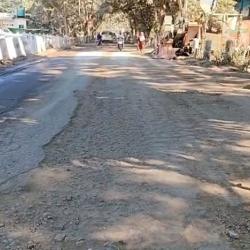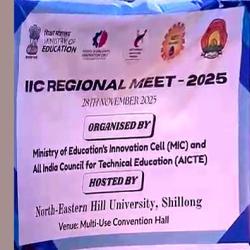by Dr. Dinesh Bhatia, North Eastern Hill University, Shillong and Mr. Krishna Mohan Agarwal, Amity University, Noida
The novel coronavirus disease or COVID-19 caused by the SARS CoV-2 virus has become a global pandemic affecting more than 1.26 crore people worldwide and more than 8 lakh people in India have been affected by the disease as of 12th July, 2020. The disease spreads by respiratory droplets and infected surfaces and shows mild symptoms such as fever, weakness, dyspnea, cough, etc., in most cases and can become serious if adequate precautions are not taken at initial stage. In India, coronavirus was first detected on 30th January, 2020 and began to spread to almost all parts of the country. National governments across the country began to close universities and colleges briefly in March as a measure to stop the spread of the novel corona virus. With no clarity on resuming operation even after almost four months has elapsed and guarantee that the virus cure has been found yet although some reports appeared in media on 12th July, 2020 that Russia has successfully conducted human trials for the COVID-19 vaccine. With the advent of this pandemic globally, traditional campuses with physical infrastructure support have been replaced by private spaces allowing extensive use of technology, internet and social media. This has led to reduced teacher-students face to face interactions, discussions leading to remote delivery with student centric individual learning and development of customized tools and contents addressing varied needs of the students. The physical evaluation method may soon be replaced by blended methods with formative assessment and evaluation of learning outcomes before advancements to next stage in online courses. It also allows flexibility to the learner towards their shared responsibilities for their parents, guardians and family members. It's a critical time for the education sector — board exams, pre-school enrolment, numerous university entrance tests and competitive exams, among many others, that are all underway at this stage which have been deferred as a preventive measure to contain the virus spread. While the days go by without an urgent means of preventing the Covid-19 crisis, school and university closures have shown short-term effect on the educational coherence of more than 285 million individual students in India and will also have far-reaching business and cultural implications in near future.
In order to have access to missed educational opportunities, children no longer have access to healthy snacks during this time and are vulnerable to financial and cultural stress. Therefore, the greatest problem is the effect of disability on work development on everyone's mind. As a result of the current situation, young graduates in India are afraid of the cessation of work vacancy by major corporations. The Centre for Tracking Economic Growth on Joblessness figures increased from 8.4% in mid-March to 23% in early April, and the youth poverty rate to 30.9% in early April.
It goes without saying that the global epidemic has reshaped the centuries-old chalk – talking blackboard based teaching model as one with technology– led advanced tools. This uncertainty in educational delivery will force decision-makers to find out how to accelerate on-scale participation while maintaining affordable e-learning options and closing the technology gap. The COVID 19 pandemic has created a VUCA environment which stands for Volatility, Uncertainty, Complexity and Ambiguity (VUCA) leading to shutting down of campuses and restrictions in place towards its routine functioning, uncertainties with regards to examination and academic calendar, health safety concerns, halting and delay in conduct of several competitive examinations, uncertainty with regards to admissions and future learning among students, enhanced costs and its effect on campus placements are few such outcome of present situation which has caused severe dilemma and indecisiveness for the administrators as well as the users. The system for education and learning is the one that has been impacted by such closures, including schooling and assessment techniques. Just a handful of private schools have been able to implement online teaching approaches. Yet, on the other hand, their low-income government and private school counterparts, for not having access to e-learning solutions, have shut down entirely.
The students require higher education to enhance their knowledge, seek job or employment or start their own businesses as an entrepreneur. This can be provided by providing right education through ASK which stands for developing the right Attitude, building both hard and Soft skills and enhancing their Knowledge through theoretical, conceptual and practical aspects. This would develop the right balance of emotional, intelligence, spiritual, curiosity and adoptability quotient in the students. As per research published KMPG India and Google it was found that the online education market in India is valued at INR 39 billion in 2018 which is expected to grow almost 10 times to INR 361 billion by 2024 which shows that it would expand by almost 44% during the period 2019 to 2024. This would be possible due to ease of learning, flexibility in choosing course modules and location to do those courses and availability of large number of options and material available online due to growth of the industry. The preference for industry is for skill-based labor force and drive towards virtual education. According to Centre for Monitoring Indian Economy (CMIE), around 30 million youth in the age group of 20-30 years lost their jobs in April 2020 following a nationwide lockdown announced by the Government to prevent the spread of Covid-19. Due to the present scenario there is low market demand, constraints on supply and demand side and employers are looking for candidates having multiple skills or can-do multi-tasking at their workplace. Many industries are increasingly acknowledging e-learning as a cost-effective and convenient source of educational practice due to class-based education proving to be expensive for small and medium-sized firms. In the current scenario, professionals would be required to re-skill themselves every 3–4 years to remain relevant in their evolving job roles as per hiring firms. They also acknowledge the fact that E-learning platforms are bringing in a measurable difference in students’ engagement and performance. It is reducing gaps in the delivery of education and giving a new dimension to the education space.
The future challenges for adoption of the new online education system lies in the mindset and attitude of all stake holders, requirement of technical skill up-gradation for users as well technical staff, availability of the technology with smooth and seamless network connectivity and stability. The penetration of internet with high speed would enable smooth dissemination of the education and involvement of public at large. Further, the development of content and course structure needs to be designed quickly that imparts knowledge and skills for enhancing employment opportunities and job prospects for the learners. The concept of GIG economy is also evolving which is based on flexible, temporary and freelance jobs involving customers through online platform. This would benefit large number of workers, businesses and consumers by making their working more flexible and adoptable as per their daily lifestyles and routine activities.
We are presently in Education 3.0 that ushered the advent of use of technology in education. It revolved around new and improved ways to teach students by leveraging technological developments. With the advent of Education 4.0 it would redefine the education landscape by placing the student at the center of the ecosystem by shifting the focus from teaching to learning. This has largely been possible due to technology that has acted as a great enabler in the pursuit of personalized learning, providing the flexibility and the comfort of remote learning at an adaptive pace and convenient time. There would changes towards engagement of part-time faculty from industry in addition to regular faculty to enhance skill-based learning. Further the course curriculum and pedagogy would be learner centric and the subject matter would be decided by the user. The ease of data sharing would remove the geographical barriers and aid in mutual collaboration. The investment would be in technological infrastructure to support blended learning and the users would be required to pay fees for both online and classroom programs.
A multi-pronged approach is required for the long-term management of the crisis and the development of an adaptable national education system. Urgent measures to ensure children's learning and growth in government colleges and organizations are vital to this. Open-source online education systems and teaching software applications should be implemented so that faculty can promote commercial teaching, which will reach all countries in India, in order to make learning open to children. Effective teaching methods need to be developed, especially for the most vulnerable and demonized. With a rapid rise in mobile Internet users in India, which is projected to cross 85 per cent of households by 2024, technology enables universal access and customization of schooling in even the most rural parts of the country. It will change the school education system and improve the quality of teaching and learning, allowing students and professors a wide variety of choices. Several ambitious districts have set up creative, mobile-based learning frameworks that can be used by others to have effective lessons.
Methodologies are required to prepare the higher education system to establish demand trends across the continent, attention to international student and faculty mobility and to improve the quality and demand for higher education in India. In addition, urgent action is required to reduce the contagion impact on work prospects, research opportunities and scientific research. It is also important to re-evaluate current methods of delivery and pedagogy in schools and higher education by integrating existing traditional classrooms with e-learning methods to create a cohesive teaching system. The main obstacle to national ED-Tech reforms is the smooth incorporation of digital technology into the existing education system in India, which is the most diverse and largest in the country, with more than 15 lakh schools and 50,000 higher learning institutions.
Ancient Indian knowledge is well known in the world for its scientific advances, principles and advantages in the production of sustainable technologies and medicines. In order to serve the greater interest of humanity, courses on ancient Indian scientific knowledge in the fields of yoga, Indian medicine, architecture, hydraulics, ethnography, metallurgy and agriculture should be combined with modern mainstream university education. The evaluation would be subject to mastery achieved by the students which would measured through transferable and explicit learning objectives that empower students. The students would receive timely and differentiated support based on their individual learning needs. The assessments would enhance positive learning experience among students that would emphasize on the application and knowledge creation with development of skills that can help to narrow down the traditional mismatch between conventional higher eduction and need of the industry which has been an area of concern for the employers to find the right kind of skilled labour to meet their industrial requirements. With social and economic trends evolving across the globe in recent years, the traditional profile of a student ready for college right after high school and enrolled in full-time classes to complete a degree, has given way to the new ‘Non-traditional’ student with varying attributes. The new age learner may already be working or have a family and may be seeking flexible schedules and program structures that allow him to progress at his/her own pace, depending on work or family obligations.
Several technological platforms such as Google classroom, Moodle, Future learn, Coursera, Udemy are available nowadays to provide blended learning digital environment to the learners. Apart from these tools such as Skype, Zoom, Hangouts, Microsoft teams, and recently launched JioMeet are available for users to engage with the experts and faculty through online classes for better understanding and discussions through these platforms. In this time of emergency, what is required for the capacity-building of young minds is a well-rounded and efficient training program. It will build all round skills that will improve employment opportunities, job efficiency, safety and well-being in the coming decades.

Dr. Dinesh Bhatia & Krishna Mohan Agarwal
- 8092 reads









Add new comment